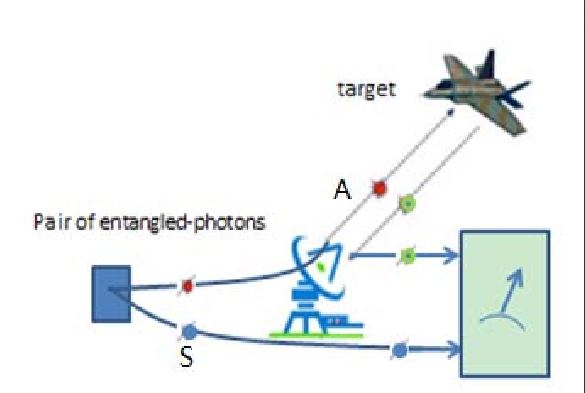


On June 22, China Electronics Technology Group Corporation (CETC), China’s foremost military electronics company, announced that its groundbreaking quantum radar has achieved new gains, which could allow it to detect stealth planes.

The CETC claims its system is now capable of tracking high altitude objects, likely by increasing the coherence time entangled photons. CETC envisions that its quantum radar will be used in the stratosphere to track objects in “the upper atmosphere and beyond” (including space).
While conventional radars just measure the reflection of radio waves, a quantum radar uses entangled photons, which result when a microwave signal beam is entangled with an optical idler beam. The microwave beam’s entangled photons bounce off of the target object and back to the quantum radar. The system compares them with the entangled photons of the optical idler beam. As a result, it can identify the position, radar cross section, speed, direction and other properties of detected objects. Importantly, attempts to spoof the quantum radar would be easily noticed since any attempt to alter or duplicate the entangled photons would be detected by the radar.
This shift is important to the back and forth of detection that has long been the story of radars vs stealth planes (which are a crucial feature of US air power). Because stealth aircraft are optimized to elude radio waves used by conventional radars, they would be much more susceptible to detection by their interaction with entangled photons. Additionally, the quantum radar could ‘observe’ on the composition of the target. Such a capability is important not just for detecting aircraft, but would also be very valuable in missile defense, where one could differentiate between an actual nuclear warhead against inflatable decoys.

For its near-space platform, the quantum radar will be installed on either a high altitude blimp or a very high altitude UAV. In this role, quantum radar would be a strategic warning system against enemy ballistic missiles and detection system against high-speed aircraft like the SR-72. For space surveillance missions, it could provide high-fidelity details on classified systems such as spy satellites and space planes like the X-37B—possibly including payload details.

Obviously, the reports do not confirm the capabilities of the system. Even if confirmed, other challenges remain, such as increasing the range of the quantum radar (as the original proof of concept in 2016 had only a 100km range). Other issues would be increasing the quantum radar’s operational reliability when deployed on aerial platforms, and decreasing its weight.

The news is an important illustration of a larger trend of Chinese advancement in the new, crucial area of quantum research. Other notable projects in China’s quantum technology include the Micius satellite, and advances by Alibaba and the Chinese University of Science and Technology in a world record of entangling 18 photons (a quantum supercomputer would require about 50 entangled photons), such that China arguably leads the world in quantum technologies. With the $10 billion National Laboratory for Quantum Information Sciences in Hefei set to open in 2020, China is clearly pouring resources into quantum and poised to make even more news in the future.
You may also be interested in:
- China shot down another missile in space
- China is opening a new quantum research supercenter
- China Says It Has Quantum Radar: What Does That Mean?
- China Launches Quantum Satellite In Search Of Unhackable Communications
Peter Warren Singer is a strategist and senior fellow at the New America Foundation. He has been named by Defense News as one of the 100 most influential people in defense issues. He was also dubbed an official “Mad Scientist” for the U.S. Army’s Training and Doctrine Command. Jeffrey is a national security professional in the greater D.C. area. They both are Associates with the U.S. Air Force University’s China Aerospace Studies Institute.
